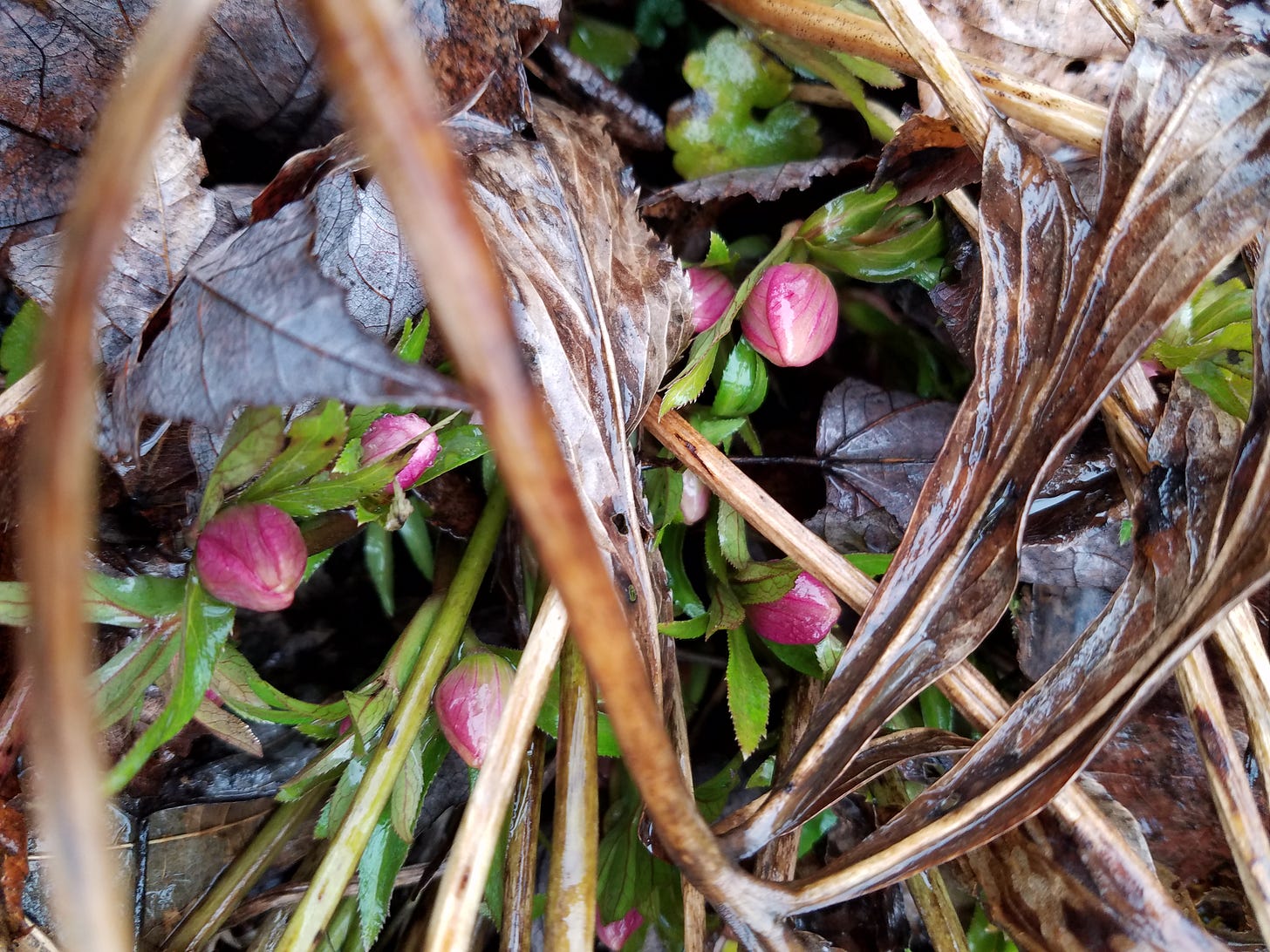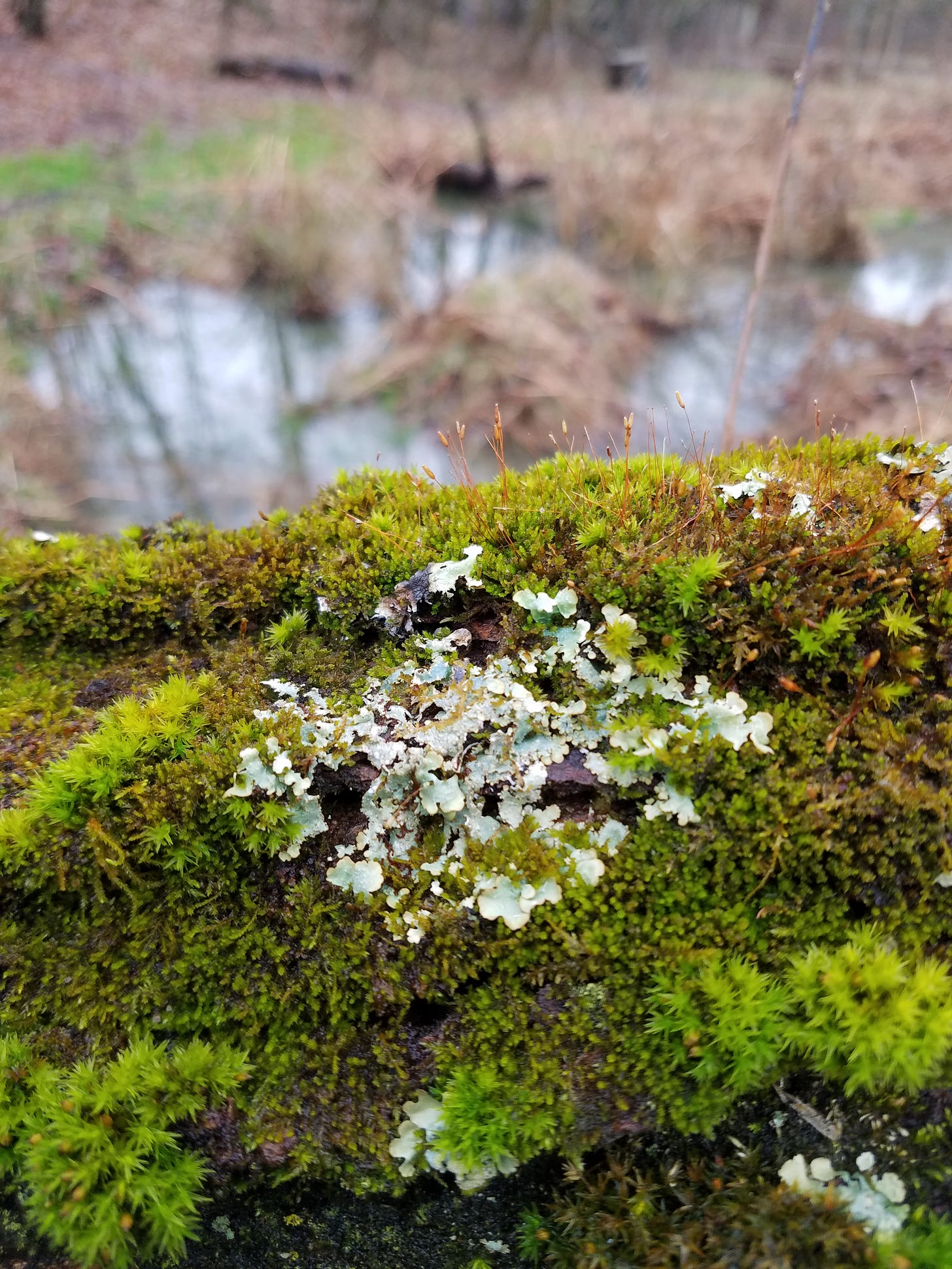Signs of spring
That shouldn't be there
I've decided there won't be a part 2 in the series “How to make it through winter in Ohio” because we're barely experiencing winter this year. Daytime temperatures regularly rise into the 40’s, and often remain above freezing at night. It seems intuitive that higher temps make things easier on the farm, but this is not the case. I've needed to carry no water to the barn because the stock tank has remained full and thawed, but this is the only benefit of the spring-like weather. The fact that it barely dips below freezing means seas of mud, more damage to pastures and footpaths, and plants and animals prematurely deciding it's time to become active.
The snowdrops are starting to bloom, the Lenten roses are showing color, and daffodils and tulip leaves are emerging from the mulch. While it doesn't really matter in the scheme of things if these non-native ornamentals are damaged or even decimated, important native and food plants are no doubt being affected as well. It will be probably be spring or summer before the damage can be assessed.
If the temperature fell into the 20s and stayed there, everything would improve greatly. The relative humidity would drop enough that it would actually feel warmer. The ground would freeze, meaning the horses could roam wherever they pleased without plowing the ground and creating persistent mudholes. Mother nature would know that it's still time to sleep. And the precipitation would come in the form of insulating and protecting snow, raising human spirits greatly. This is unlikely to occur, despite the fact that I have been praying fervently for another bomb cyclone.
Though I would instantly trade them for true winter given the chance, I won't deny that I enjoyed the sunny days. The greens of mosses stand out against the grays and browns. The lichens are vibrant, and the full ponds glow with a blue-green tinge. The grass and clover are actually growing, albeit very slowly.
Anyone who keeps grazing animals has a constant eye on such growth, unconsciously assessing it for future munchilibity. The growth, though lovely, has caused problems since the horses are eyeing it as well. Their range in winter is limited to a sacrifice paddock, the gates of the three main pasture sections closed until spring, but the grass proved irresistible and they trampled a fence to get to it. Frozen ground, snow cover, and sturdier fences would have prevented this feeding frenzy, but only one of those things is within my control.
The fence is repaired and the temps are dropping. We even got a bit of snow yesterday and the National Weather Service promises a colder week — one night as low as 11°! I've added mounds of mulch to the tulips, hoping to keep them sufficiently stabilized to delay growth until a safer date. I've dealt with deer, rodents, and water-logged winter soil in my efforts to grow the prima donnas, and I'm not going to give up now. Expect loads of photos in the spring if they survive. For now, here's a small sample from 2022.








"Precipitation would come in the form of insulating and protecting snow," sounds like a strange and almost poetic observation to those of us living in the technological beehive. But I get it. Fewer and fewer humans are invested in the little changes happening in the essential world. Thank you for the updates.
Lovely photos... Ah, that electric-green moss! But you are right about the weather. Did that groundhog see his shadow today, or not?